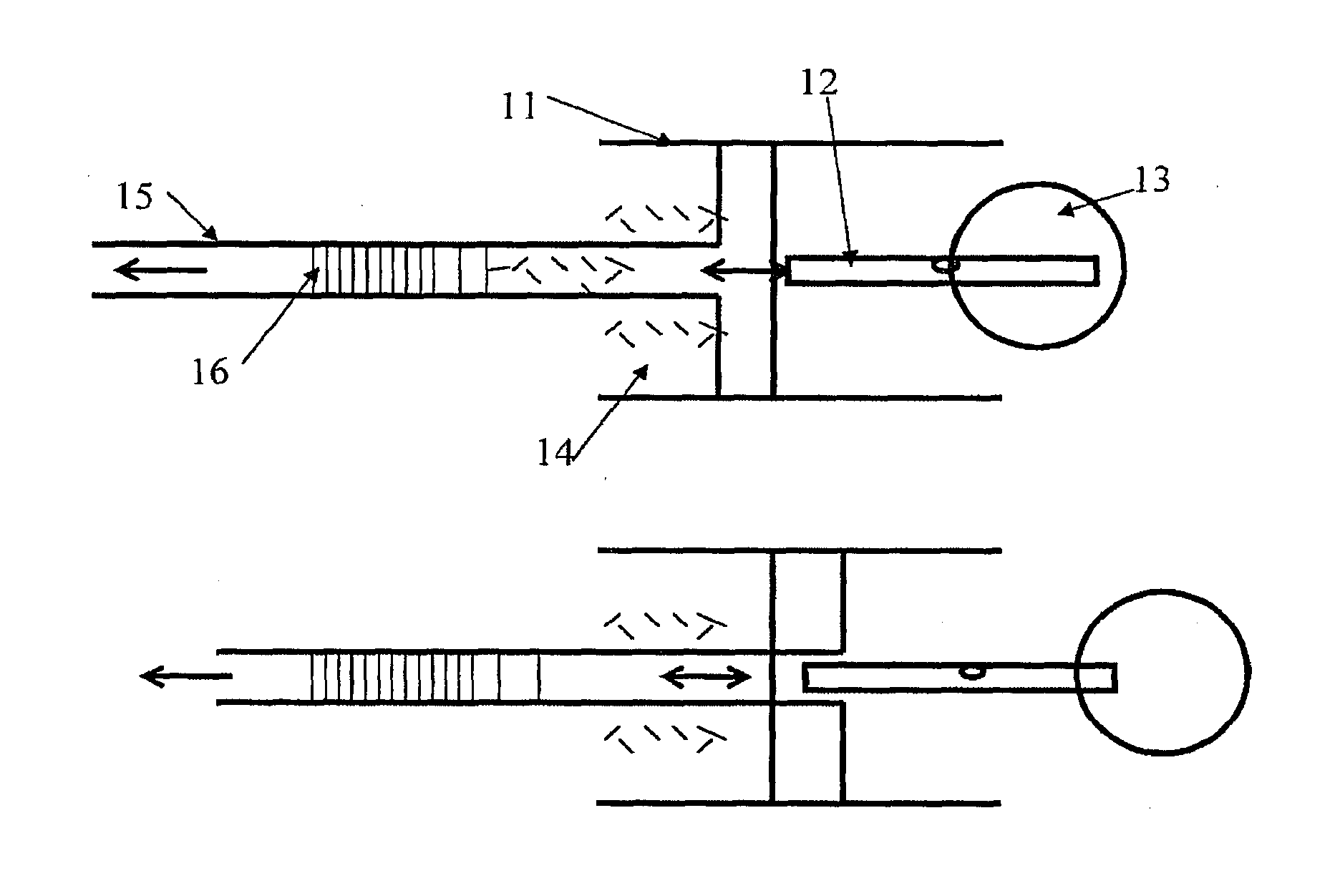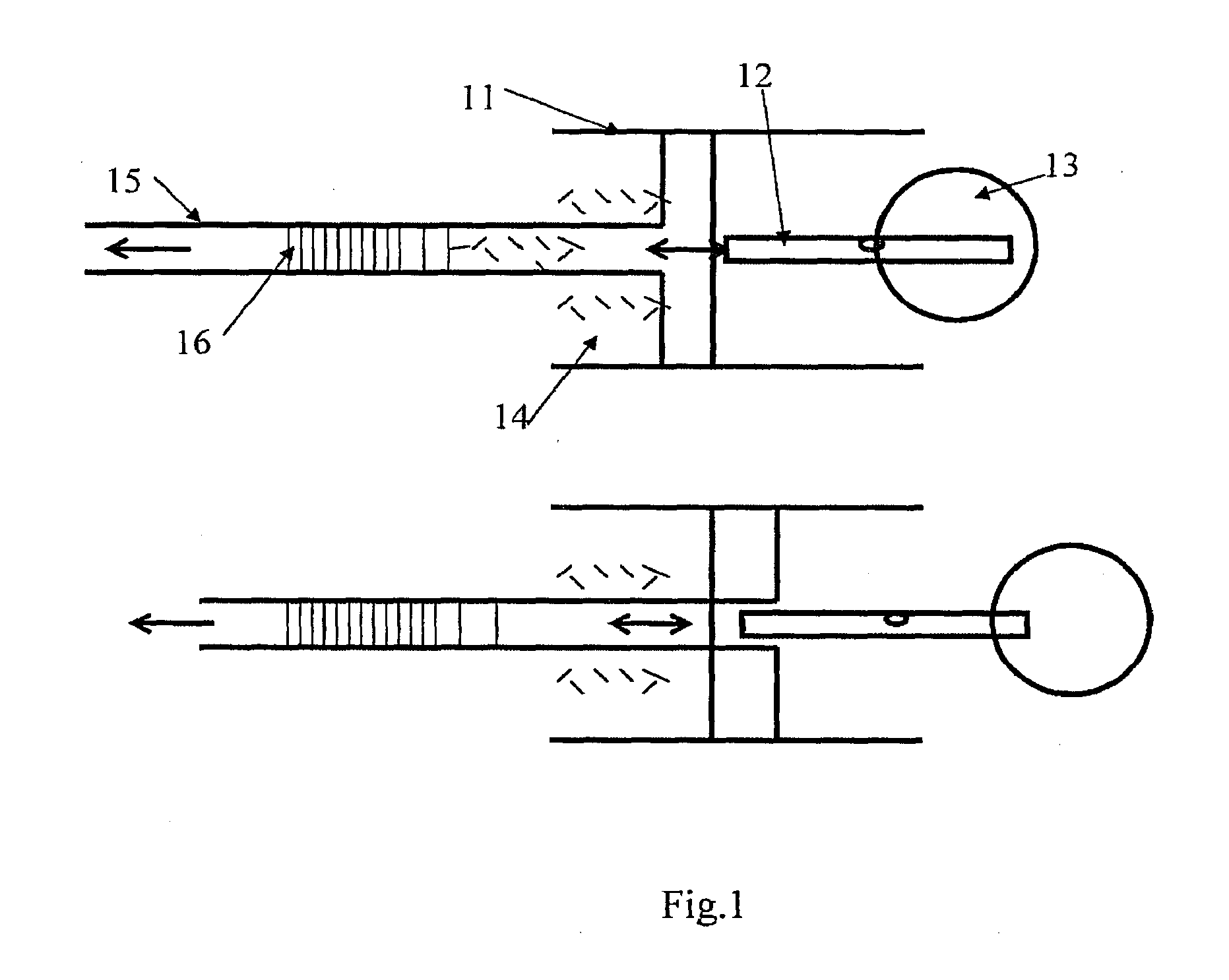Method For Processing A Biomass Containing Lignocellulose
a technology of lignocellulose and biomass, which is applied in the field of processing a biomass containing lignocellulose, can solve the problems of reducing the net energy production and cost efficiency, large amount of water and energy used for pre-treatment, and affecting the quality of the finished product, so as to improve the feed value of straw, reduce the consumption of water, and reduce the consumption of chemicals
- Summary
- Abstract
- Description
- Claims
- Application Information
AI Technical Summary
Benefits of technology
Problems solved by technology
Method used
Image
Examples
Embodiment Construction
[0037]According to the present invention, this is achieved by a method which is peculiar by including steps for:[0038]repeated compressions of the biomass in a reciprocating piston press, where loose biomass is continuously fed into a piston chamber in front of a piston which moves the loose biomass into a tubular reaction chamber in which the biomass is compressed for producing a mechanically induced water vapour explosion and autohydrolysis under simultaneous displacement of compressed biomass through the reaction chamber.
[0039]By the present invention is thus achieved an efficient method for establishing a first step in the process of utilising lignocellulose as substrate for various processes as the explosion of the water by the mechanically induced steam explosion causes the cellulose fibres to be torn up mechanically. This tearing up make lignocellulose components of cellulose and hemicellulose accessible to subsequent enzymatic decomposition to their respective monomers.
[0040...
PUM
| Property | Measurement | Unit |
|---|---|---|
| pressure | aaaaa | aaaaa |
| pressure | aaaaa | aaaaa |
| pressure | aaaaa | aaaaa |
Abstract
Description
Claims
Application Information
 Login to View More
Login to View More - R&D
- Intellectual Property
- Life Sciences
- Materials
- Tech Scout
- Unparalleled Data Quality
- Higher Quality Content
- 60% Fewer Hallucinations
Browse by: Latest US Patents, China's latest patents, Technical Efficacy Thesaurus, Application Domain, Technology Topic, Popular Technical Reports.
© 2025 PatSnap. All rights reserved.Legal|Privacy policy|Modern Slavery Act Transparency Statement|Sitemap|About US| Contact US: help@patsnap.com



